#Colleges
Text

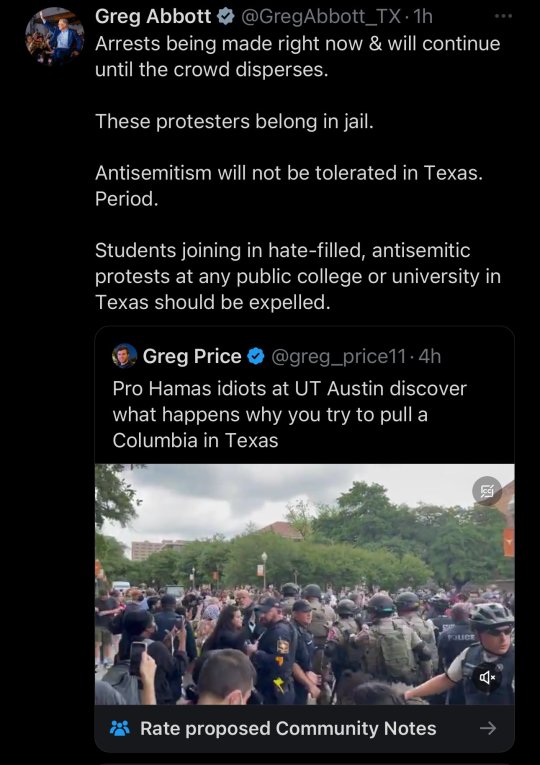
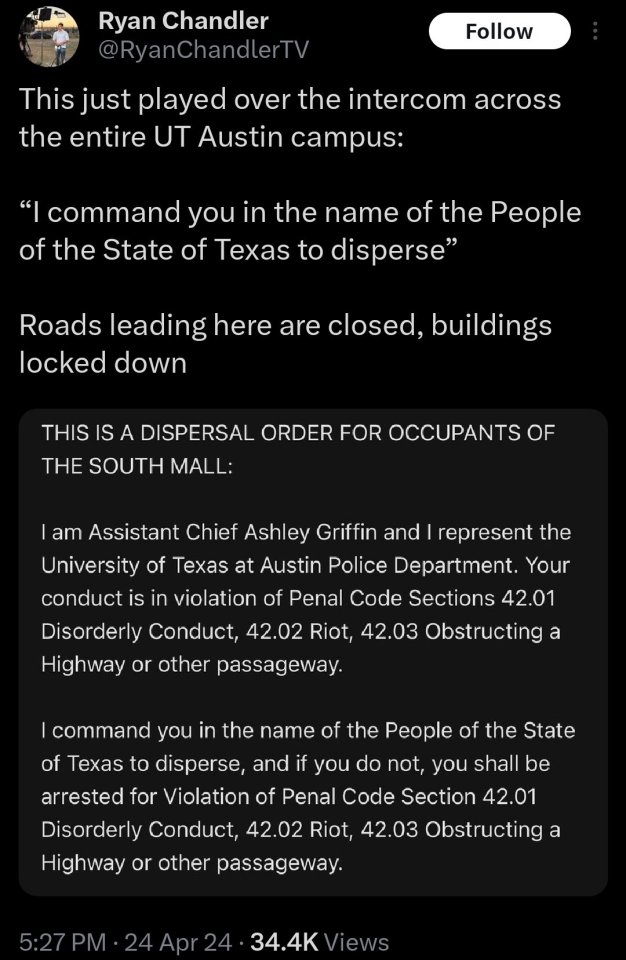

#Texas#columbia#democrats#republicans#politics#Ut austin#nyc#greg abbott#woc#dictatorship#Colleges#Asia#free palestine
146 notes
·
View notes
Text



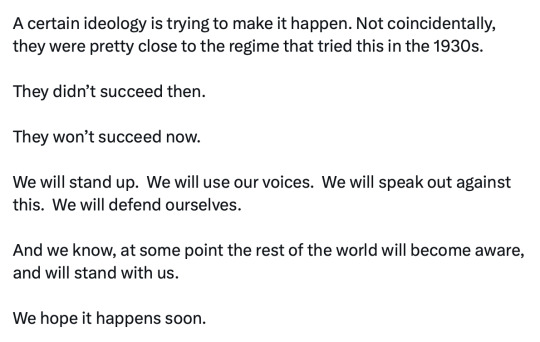
103 notes
·
View notes
Text
Searching best practices on JSTOR
Hi Tumblr researchers,
As promised, we're going to dive into some best practices for searching on JSTOR. This'll be a long one!
The first thing to note is that JSTOR is not Google, so searches should not be conducted in the same way.
More on that in this video:
youtube
Basic Search on JSTOR
To search for exact phrases, enclose the words within quotation marks, like "to be or not to be".
To construct a more effective search, utilize Boolean operators, such as "tea trade" AND china.
youtube
Advanced Searching on JSTOR
Utilize the drop-down menus to refine your search parameters, limiting them to the title, author, abstract, or caption text.
Combine search terms using Boolean operators like AND/OR/NOT and NEAR 5/10/25. The NEAR operator finds keyword combinations within 5, 10, or 25 words of each other. It applies only when searching for single keyword combinations, such as "cat NEAR 5 dog," but not for phrases like "domesticated cat" NEAR 5 dog.
Utilize the "Narrow by" options to search for articles exclusively, include/exclude book reviews, narrow your search to a specific time frame or language.
To focus your article search on specific disciplines and titles, select the appropriate checkboxes. Please note that discipline searching is currently limited to journal content, excluding ebooks from the search.
youtube
Finding Content You Have Access To
To discover downloadable articles, chapters, and pamphlets for reading, you have the option to narrow down your search to accessible content. Simply navigate to the Advanced Search page and locate the "Select an access type" feature, which offers the following choices:
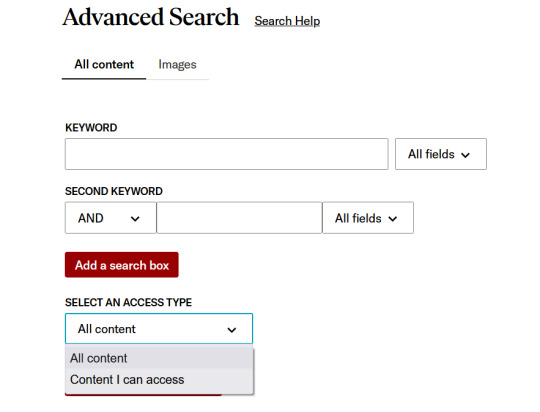
All Content will show you all of the relevant search results on JSTOR, regardless of whether or not you can access it.
Content I can access will show you content you can download or read online. This will include Early Journal Content and journals/books publishers have made freely available.
Once you've refined your search, simply select an option that aligns with your needs and discover the most relevant items. Additionally, you have the option to further narrow down your search results after conducting an initial search. Look for this option located below the "access type" checkbox, situated at the bottom left-hand side of the page.
Additional resources
For more search recommendations, feel free to explore this page on JSTOR searching. There, you will find information on truncation, wildcards, and proximity, using fields, and metadata hyperlinks.
#happy researching!!!#jstor#research#academic research#academic writing#academia#academic database#searching#higher education#students#colleges#university#learning#teaching#librarians#libraries#Youtube#studyblr#ref
2K notes
·
View notes
Text
Just saw that video with all these people from extremely prestigious colleges legit saying it's okay to call for Jewish genocide as long as it's within context.
Don't know if I should be more surprised at the sentiment they expressed or by the fact that none of them looked ashamed as they expressed it.
Disgusting. Simply disgusting. And then people are like "whaaaaaat we never said anything outright antisemitic why are all the jews going to YU all of a sudden?" BECAUSE OF EVERY. SINGLE. ONE OF YOU.
227 notes
·
View notes
Photo
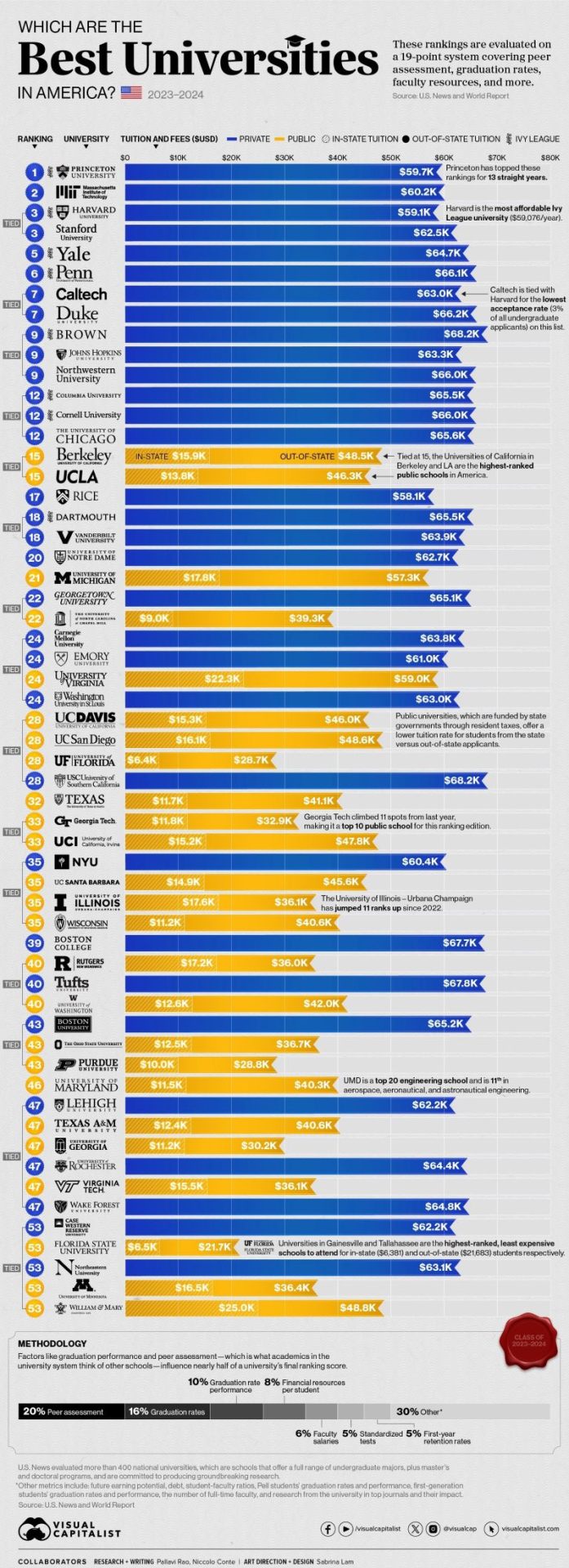
Take a look at the chart that lists the best colleges based on a 19-point system including peer assessment, graduation rates, and faculty resources.
Choosing the right university is an important decision that can have a significant impact on your future.
The decision is not just about selecting a school with a strong academic reputation. It’s also about finding a place that is a good fit for you personally – your values, interests, and goals.
(via The 50 best universities in the United States in 2023-24 (ranking))
#universities#education#learning#ranking#colleges#college#writer updated#infographic#educate yourself
75 notes
·
View notes
Text
"Last week, the presidents of Harvard, MIT, and the University of Pennsylvania were called to testify before Congress about the alarming rise of anti-Semitism on their campuses, and their tepid responses to it, in the wake of October 7.
By now, you have probably heard about the trio’s horrendous overall performance, punctuated by their smug inability to respond to the simple question of whether calling for the genocide of Jews violates their schools’ codes of conduct. Since that time, the president of UPenn has stepped down, and support for the other two is wavering.
In case you are wondering, their answer should have been an unequivocal “yes, it violates our polices.” The right to free speech is fundamental, but it does have limits: The First Amendment is not a pass to threaten, harass, intimidate or otherwise violate the rights of others.
For the record, even those pundits who (incorrectly) defended the university presidents’ testimony as being legally correct, if morally tone deaf, had to admit that it did represent a glaring double standard. Each of these universities has in recent years protected other minority groups from even “micro-aggressions” by effectively and ruthlessly shutting down speech that their leaders find offensive.
Struggling to answer whether calls for genocide against Jews constitutes bullying, after you have already officially labeled “fatphobia” as “violence” and “using the wrong pronoun” as a form of “abuse,” is pathetic, and to see these schools pretending that they are genuinely concerned about free speech all of a sudden is nothing short of laughable. In the Foundation for Individual Rights and Expression’s 2024 College Free Speech Rankings, for example, out of 248 US campuses, Penn and Harvard were ranked 247th and 248th, respectively. If you are only concerned about shutting down speech when that speech targets Jews, well, there is a word for that.
How Free Is Free Speech?
The First Amendment does not protect trespassing, vandalism, harassment, assault, or the destruction of property. Nor does it protect speech that is not meant to inform or persuade, but to disrupt lawful endeavors —activities like going to the kosher dining hall or studying in a library. The First Amendment does not protect someone who is making true threats, nor does it protect intimidation — “a type of true threat, where a speaker directs a threat to a person or group of persons with the intent of placing the victim in fear of bodily harm or death.”
Just a few months ago, in Counterman v. Colorado (2023), the United States Supreme Court clarified that this does not necessarily mean that the person speaking actually intended to threaten the victim. Rather, the Court imposed a recklessness standard — i.e., the First Amendment does not protect a person who consciously disregards a substantial risk that his communications would be viewed as threatening violence. To be clear, calling for the genocide of Jews, as the pro-Hamas student groups on campus have consistently been doing, does create a hostile environment for Jewish people on campus, violates Title VI of the Civil Rights Act of 1964, and is not protected by the First Amendment.
It was obvious that all three university presidents were reading off scripts written by their respective attorneys (several of whom were sitting behind them and nodding throughout the hearing). The question then becomes: What now? What is the critical error that their lawyers (and the general counsels at other universities where Jewish students are being targeted) have made in failing to stand up for Jewish people, and how should they immediately correct it?
The answer is simple, and it is exactly what students, parents, donors, and the government alike should all be demanding from these institutions: They should continue to respect the First Amendment, but they should apply the appropriate standard for speech on a campus.
From a legal perspective, it is easy to see where the university legal counsels’ confusion specifically arose. Those horrible answers were written under the assumption that the only limits a university can put on student speech are the limits contemplated in the foundational Supreme Court First Amendment case of Brandenburg v. Ohio (1969).
In that case, regarding speech at a KKK rally, the Court held that a state could only punish speech that “is directed to inciting or producing imminent lawless action and is likely to incite or produce such action.” Brandenburg is famously a very high standard, and that is precisely where the universities are hiding: Despite the hundreds of anecdotal incidents from the last two months, and notwithstanding all of the well-known studies confirming that inflammatory discriminatory anti-Semitic rhetoric leads directly to anti-Semitic violence, officials are telling students and parents and now Congress that their hands are tied because, in most cases, there has not been direct enough incitement.
Campus Standards Are Different
Now, the truth is that even under the Brandenburg standard, schools can still impose reasonable time, place, and manner restrictions. As the Court in Grayned v. City of Rockford (1972) explained: “The crucial question is whether the manner of expression is basically incompatible with the normal activity of a particular place at a particular time.”
So even under that paradigm, any activities that disrupt the educational enterprise and functioning of a school may be restricted. Common sense dictates that rallies celebrating calls for anti-Semitic genocide disrupt the educational enterprise and functioning of a school because they leave some students genuinely fearful for their lives.
But that argument is also unnecessary, because Brandenburg is absolutely the wrong standard for schools to be using, and university presidents and lawyers need to correct that mistake as soon as possible.
In Tinker v. Des Moines (1969), the Supreme Court explained that the Constitution does allow for schools to shut down speech that will “materially and substantially interfere” with the “requirements of appropriate discipline” in the operation of the school” or that “invad[es] the rights of others.” That is the standard that these schools must now vigilantly enforce.
Of course, private colleges and universities, like Harvard, Penn, and MIT, can restrict certain speech, conduct, and demonstrations, in most cases, without triggering any constitutional issues. But even a public university is not a public street, and the rules for what speech must be allowed on each are very different.
The Supreme Court in Healy v. James (1972) cited Tinker to hold that university officials do not have to tolerate student activities that breach reasonable campus rules; interrupt the educational process; or interfere with other students’ rights to receive an education. (This is especially true when the student speech is happening in school-sponsored forums, or is reasonably perceived as somehow bearing the school’s imprimatur.)
The Court has also repeatedly held (in Bethel v. Fraser [1986] and Hazelwood v. Kuhlmeier [1988]) that schools have even greater latitude to limit student expression if they can establish a “legitimate pedagogical concern.” Ensuring that all students — including Jewish students — have a safe and harassment-free environment in which to learn should be an overwhelmingly legitimate pedagogical concern.
Under the Tinker line of cases, schools do not even have to wait for a breach to actually occur; administrators can act if they can “reasonably forecast” that the expression in question would disrupt school discipline or operation, or violate the rights of other students. In Melton v. Young, for example, the Court ruled that schools could prohibit the wearing of a Confederate flag jacket because it was reasonable to assume that it would be disruptive in an environment of heightened racial tension.
Waving a Hamas flag and cheering on slaughter, as bodies are still being identified and hostages are still being held, announcing solidarity with the “resistance” and that “armed struggle” — i.e., murder —“is “legitimate,” and yes, calling for the genocide of Jews, are all behaviors that are no less likely to cause a disruption than a jacket.
Tinkering with Free Speech
Under Tinker, it is more than reasonable to forecast that there will be substantial disruptions that would violate the right of Jewish students to a non-hostile educational environment if groups are allowed to host events that glorify and celebrate the murder of Jews.
Schools can and must act now to prevent that from continuing to happen, using both common sense and the relevant case law to draw the appropriate line. The limits on the First Amendment are there to help the government with its primary responsibility —to protect all of its citizens from harm —and authorities must be constantly vigilant to enforce the law correctly.
Regardless, the answer to “what now?” then, is this: Everyone calling for change should articulate what that change is, and institutions fixing their policies should clearly explain how they will “tinker” with their free speech formulas so that the next time their leaders are asked if calling for a Jewish genocide is problematic, the answer can just be “yes.”
-Goldfeder, M. (2023g, December 13). Poison Ivies - Mishpacha Magazine. Mishpacha Magazine - The premier Magazine for the Jewish World. https://mishpacha.com/poison-ivies/
77 notes
·
View notes
Photo

Age of the oldest functioning university/college across the US and the EU, 2023.
by u/maps_us_eu
256 notes
·
View notes
Text


Down goes Kentucky in the first major upset of the men's NCAA tournament
#college basketball#march madness#kentucky wildcats#oakland golden grizzlies#ncaa tournament#colleges
26 notes
·
View notes
Text

#Palestine#free palestine#israel#colleges#schools#islamophobia#antisemitism#democrats#republicans#politics#censorship
365 notes
·
View notes
Text
Lex McMenamin at Teen Vogue:
College students have been at the forefront of the movement for a ceasefire in Palestine since Israel's ongoing incursion of Gaza after the October 7 Hamas attack. As soon as organizing for that movement began, there was backlash against it, including doxxing and harassment at Harvard, attempted state-level bans of Students for Justice in Palestine (SJP) chapters in Florida, and also the banning of protests and SJP chapters at other universities. In Vermont, Palestinian college students on a walk, wearing kuffiyehs, were shot at during Thanksgiving break. (The reported shooter, who has pleaded not guilty to attempted second-degree murder, remains in jail as the case proceeds.)
Over the past few weeks, several student protesters have received criminal charges, expulsions, suspensions, and campus bans due to their involvement in protests for Palestine. This includes students at Columbia, who say they are being scapegoated before an April 17 congressional hearing to investigate Columbia University over campus antisemitism. (After a similar proceeding in December, the president of Harvard and the University of Pennsylvania each stepped down.) According to Inside Higher Ed’s reporting, "some observers have described [the April hearing as] a political trap set by Congressional Republicans critical not only of campus leaders’ response to antisemitism but also of higher education in general.”
The apparent suppression on campuses, while currently intensifying, isn’t new or recent: For the past several years, the organization Palestine Legal has represented and supported student organizers facing similar backlash. A representative for Palestine Legal tells Teen Vogue that, since October, the group has received “over 720 reports of suppression of Palestinian rights advocacy on campuses across the country.”
Meanwhile, the movements for ceasefire and Palestine are credited with reanimating student organizing, as well as pushing President Joe Biden’s policy stance on US support for Israel. That outcry has manifested in Uncommitted campaigns that have built momentum in presidential primaries across US states, and may also be pushing Biden to shift his policy.
But these same organizing movements are seeing pushback on forms of protest that are historically common on campuses. Some students have been suspended or arrested for occupying campus buildings. In other instances, the backlash comes after students pushed to hold student body votes on divesting university funds from Israel or Israeli companies; at Vanderbilt, Ohio State, and Harvard, attempted referendum votes on the matter were canceled, suspended, or indefinitely postponed.
Teen Vogue reports on the disturbing trend that colleges across the USA are suppressing pro-Palestinian protests and referendums against divesting funding from Israel Apartheid State by arresting, suspending, or even expelling students protesting for Palestinian rights.
#Colleges#Palestine#Ceasefire NOW#Israel/Hamas War Protests#Israel/Hamas War#Ceasefire NOW Protests#Protests#Free Palestine#Israel Apartheid#Boycott Divest Sanctions#BDS#College#Higher Education#Israel/Palestine Conflict#Gaza Genocide#Students for Justice in Palestine
21 notes
·
View notes
Text
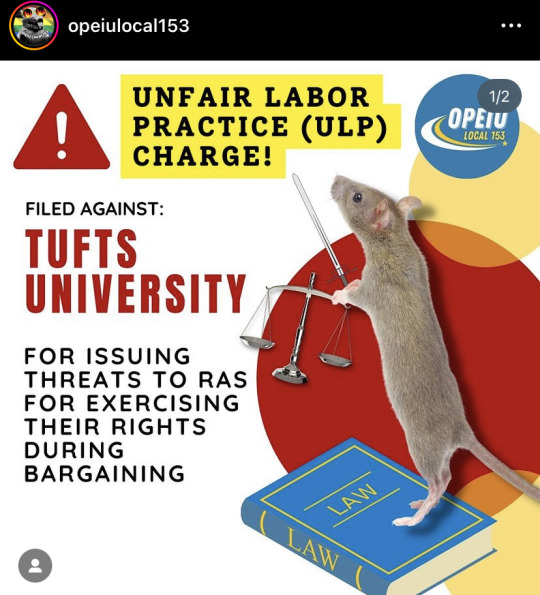
Tufts University Resident Assistants (RAs) authorized a strike earlier this week in response to Tufts’ failure to make any offer for compensation in the form of a stipend. RAs at Tufts are currently only compensated with housing- they need to live on campus to do their jobs- but no stipend or wages during the semester or the three weeks of unpaid training they must attend in early august before other students are on campus. They also do not receive a meal plan.
Tufts recently sent an email communication to university students about Union activity on campus, failing to mention their bad faith attempt at bargaining over the past six months, and ending with a threat against potential strikers.
This portion of the email reads, “We anticipate everyone involved will respect our community values and one another’s right to enjoy the new semester without disruption. While we support the units’ engagement with our campus, any actions or activities that create a hostile campus environment, endanger public safety, or violate our Student Code of Conduct will be addressed by the appropriate members of our staff.”
This is a clear threat of conduct proceedings and potential expulsion against student workers who have a legally protected right to strike without retaliation. OPEIU local 153 is filing an unfair labor practices suit against Tufts University as a result of this threat and others from Tufts lawyers in bargaining meetings.
Support ULTRA, the Tufts RA Union, by signing this petition: https://actionnetwork.org/letters/tell-tufts-resident-assistants-deserve-pay/
#Union#student workers#union solidarity#support unions#opeiu#union organizing#university#tufts university#colleges#unfair labor practices#strike#Union strike#student rights
89 notes
·
View notes
Text
Via a conversation on Metafilter about the state of Florida's decision to crush its public institutions, a person I think is particularly wise left a comment about the state of the legislature on higher education in Wisconsin.
The situation in Florida is atrocious, but it's important to be aware of how widespread this movement on the part of MAGA politicians to ban all academic and support programs related to gender, race/ethnicity, and sexuality is. I'm a professor in the Wisconsin state university system, where, in addition to my regular fulltime work in my home department I direct the LGBTQ+ Studies Program (a more-than-halftime job I have done for many years in return for zero additional salary, or summer funds, or course buyout, or any other compensation...).
This summer, the Wisconsin state legislature, gerrymandered into permanent Republican control, voted to ban all DEI programs in the state university system, and cut $32 million from the university budget, which it stated was amount of "taxpayer money being wasted on divisive indoctrination efforts" (to paraphrase Assembly Speaker Robin Vos). This comes after years of successive budget cuts and a ten-year tuition freeze and years of faculty and staff taking pay cuts in the form of "furloughs" through which we were expected to just keep working. The situation is now somewhat improved in that Gov. Tony Evers, a Democrat, vetoed the DEI ban, but he cannot restore the funding. Anyway: a few days after the legislative vote to ban DEI , I was giving a talk about the range of state bills attacking trans youth and adults, and there was a Democratic state legislator on the panel. When we were introducing ourselves and I told her I directed the LGBTQ+ Studies Program, she said, "Oh, but that's no longer legal. Well, unless Evers vetoes the ban; we'll see."
After doing some blinking, I responded by explaining the difference between DEI programs and academic programs. DEI programs provide student support services, which is deemed administrative work, in contrast to academic programs. The LGBTQ+ Resource Center and the LGBTQ+ Studies Program at my university are both vital and important. But the resource center organizes support groups and social activities for students, while the academic program teaches classes and sponsors academic talks. Academic programs are not part of the DEI system--and the very same legislature that voted for the DEI ban had spent years prior threatening sanctions against students and faculty for supposedly not sufficiently respecting the absolute value of free speech in academia. Legislators presented instructors as censorious ideologues, students as snowflakes in love with a victim narrative, and the legislature as the champion of teaching and discussing all ideas freely.
The image of DEI programs presented by Republican legislators is some kind of kink fantasy, in which cis straight white men are forced to prostrate themselves, declare themselves to be bad and deserving of punishment, and lick the boots of students who are trans and queer, of color and feminist. The reality is that university DEI programs are providing mental health services and tutoring and social support to college students, at a time when their levels of mental health challenges are very high. They have zero to do with the kink humiliation fantasy, they really are about inclusion, and it is ludicrous and cruel to cut social support to marginalized college students.
But even if the state ban were not vetoed, a DEI ban does not dismantle programs like Gender Studies or African and African Diaspora Studies or LGBTQ+ Studies, because they are academic programs, I explained to the Democratic legislator. But from her response, it was clear that not only did Republican Wisconsin legislators think they'd banned all academic programs examining race/ethnicity, gender, sexuality, and who knows what else (disability studies? Jewish studies and Islamic studies?), but that the Democratic legislators seemed to believe so as well.
The flip from "we are the party of free speech!" to "we are the party that bans books and entire academic disciplines!" happened with dizzying speed. But take it from me as a trans person--these legislative attacks can burst across the country in the space of months, shifting the landscape radically. The thing about the MAGA movement is that it is made up of people who believe that the situation is desperate, the American project is on the verge of failure, and the time has come to destroy or be destroyed. Most Americans, including non-MAGA Republicans, want to see the culture war cool down and Americans get along, but MAGA-sorts want it to go hot. And I have to admit some despair about what to do about this, because of the unpersuadability of this group. Take a look at Question 39 from this CBS/YouGov poll of Iowa voters last week, and what percentage of Republican voters there believe they are being lied to by various parties. The percentage of MAGA voters who said they said they believed they were being told the truth by Trump was 71%, in comparison to 63% for friends and family, 56% for conservative news sources, and 42% for religious leaders. Only 32% of Iowa Republicans generally believed they were told the truth by medical scientists. (The figures for Joe Biden and "liberal media" were 10% and 8% respectively.)
It is hard to persuade people with facts and logic and calls for empathy when they think you are a liar attacking their great leader with whom 99% say they identify. What we have to do is persuade others to stand up. And I don't want to be doomy, but my experience with resisting transphobic legislation and action causes me a lot of concern. It's not just "the face-eating leopards won't eat my face" problem. The fact is, frankly, that a lot of institutions and people are craven. This past year I was in a working group with medical and social scientists advising the HHS about creating guidelines for research with intersex and transgender populations, and then Libs of TikTok spread lies about hospitals supposedly performing "sex changes" on little kids, and several children's hospitals received bomb threats--and suddenly most of the medical researchers working with trans youth were pulled from the working group by the hospitals they were affiliated with. Hospital administrators are shutting down research on trans youth and clinics serving trans youth, rather than having the backs of threatened doctors and patients, handing a victory to the face-eating leopards who growled at them.
My conclusion is that we need to focus energy on teaching people who have not dealt with serious bullying before how to stand up to bullies. For people like concerned parents considering attending school board meetings to oppose book bans, we could teach basic mutual aid strategies, like forming a supportive group to attend together. But what we are to do about people like college administrators and corporate executives who would like to do the right thing for students and employees, but not as much as they'd like to avoid offending a wealthy donor or receiving negative conservative media attention. . . that's a big question to me.
I have left my own longer comment in the wider thread.
(If you also like longform, thoughtful text conversation, this is my regular plug for Metafilter as a platform. If you DM me an email address, I can send you an invitation link for a free account.)
#metafilter#education#public education#colleges#legislators#cannot fucking believe the DEI thing#the thing is I have collaborated with this person in the past and he is a deeply sensible human being#so if he says this is what the legislators think#I believe him
90 notes
·
View notes
Photo

Top 50 novels by women authors that are most assigned in U.S. colleges
Frankenstein by Mary Shelley is the most assigned novel by a woman in U.S. colleges. It features in 4,789 syllabi, and it is the most assigned novel written by a woman in 41 states.
(via Here are novels written by women that are most assigned in U.S. colleges)
#education#ivy league#college#colleges#novels#writers#readers#infographic#women authors#chart#public colleges#omniscient reader's viewpoint#reader updated
62 notes
·
View notes
Text

#endisraelsgenocide#free palestine#boycott israel#anti capitalism#anti imperialism#ceasefirenow#genocide#israel is a terrorist state#warcrimesingaza#americancrimes#higher education#american history#western genocide#stop arming israel#higher learning#antifada#complicity#colleges#reject aipac#corrupt government#degree#in#antizionism
11 notes
·
View notes
Text
Perhaps the most shocking thing about Hamas’s pogrom is not so much the attack itself – although it was horrifying – but the accompanying glee we see on the Western left, most obviously and appallingly on college campuses.
Jewish students were besieged at a library at Cooper Union by a crazed pro-Hamas mob. Jews at Cornell University were threatened with gruesome death. At Harvard, students chant, “From the river to the sea, Palestine will be free,” a call for the genocide of Israeli Jews. At George Washington University, jihadist and genocidal language was projected on the library building. A Jewish student was attacked at Columbia University and Jewish students said that they don’t feel safe there.
To add insult to injury, more than 100 Columbia University professors signed a letter defending students who support Hamas’s “military action.” A history professor at Cornell proclaimed that he was “exhilarated” by what happened October 7. A Yale professor sneered that massacres of Israelis are fine because they are all “settlers” anyway and “settlers are not civilians. This is not hard.”
Colleges have long cultivated a simplistic ideology that bifurcates all of humanity into two buckets: the “oppressed” and the “oppressor.” This childish division of all human activity allows for zero nuance. If you’re oppressed, all is allowed, even atrocities. If you’re the oppressor, nothing you do is justified – you are guilty, whatever you do or don’t do.
According to this absurd ideology, Israel is an oppressor. Therefore, everything it does – even existing – is unacceptable.
On the other hand, Hamas is the voice of the oppressed, so anything and everything it does – from wanton massacres to explicitly admitting that it only cares about its fighters, and not for the people of Gaza who, it says, are the international community’s responsibility – is cloaked in righteousness.
Nothing is allowed to penetrate the alternative reality of this dogmatic ideology, which is why posters depicting kidnapped Israelis must be ripped down. Israelis are demons, you see, even the babies.
It is all depressingly reminiscent of an earlier time, between the two world wars, when Jewish students throughout Europe were terrorized by ideological fellow students.
“Polish universities became the stage of the most extreme antisemitic activities,” writes Celia Heller in her book On the Edge of Destruction. Polish universities in 1936 and 1937 had “Jewless” days and weeks. Radical students called for a quota on Jewish students and “ghetto benches” where Jews would be forced to sit. Administrations, weak then as now, caved.
Heller writes, “Violence was condemned in words, but encouraged in deeds through concessions granted to the perpetrators of violence at the cost of the victims of violence. Further violence was the result.” Radical students “took walks in the evening to hunt for the Jewish students.”
All the while, most students and faculty remained silent.
In 1920, under student influence, the Hungarian parliament passed the Numerus Clausus Act, which limited Jews to six percent of the student body of universities. There were continuous antisemitic student riots throughout Hungary in October 1928. Students attacked Jews at a university in Budapest in 1930.
Most notorious are the students of Germany, who were among the most radical elements of the interwar Weimar Republic and the early Nazi period, and an important constituency of the Nazi Party. German students conducted a campaign of intimidation against Jewish students and, infamously, burned more than 25,000 books in 34 university towns on May 10, 1933.
The National Socialist German Students’ Association expressed the need to “cleanse” and “purify” German language and literature from “Jewish intellectuals.” It was this thinking that was behind the book burnings.
The notions of “cleanliness” and “purity” were highly important ones in Nazi ideology. The Nazis desired a Judenrein (“pure of Jews”) Germany, and then Europe (and beyond – the Jews of the Middle East, too, would have been murdered if Rommel hadn’t been defeated at El Alamein).
Fast forward to today. A New York City public school student displayed a poster reading “Please Keep the World Clean” with an illustration of a Star of David in a trash can. A virtually identical poster was held by a Norwegian medical student in Warsaw. This is Nazi language.
Campus radicals today are also intimidating Jewish students while administrators issue mealy-mouthed statements. Students are in thrall to a totalizing ideology that brooks no dissent and burns with hatred for Jews.
American Jews feel that they have seen all this before, and they are right. Universities are once again incubators of moral rot and antisemitism.
52 notes
·
View notes